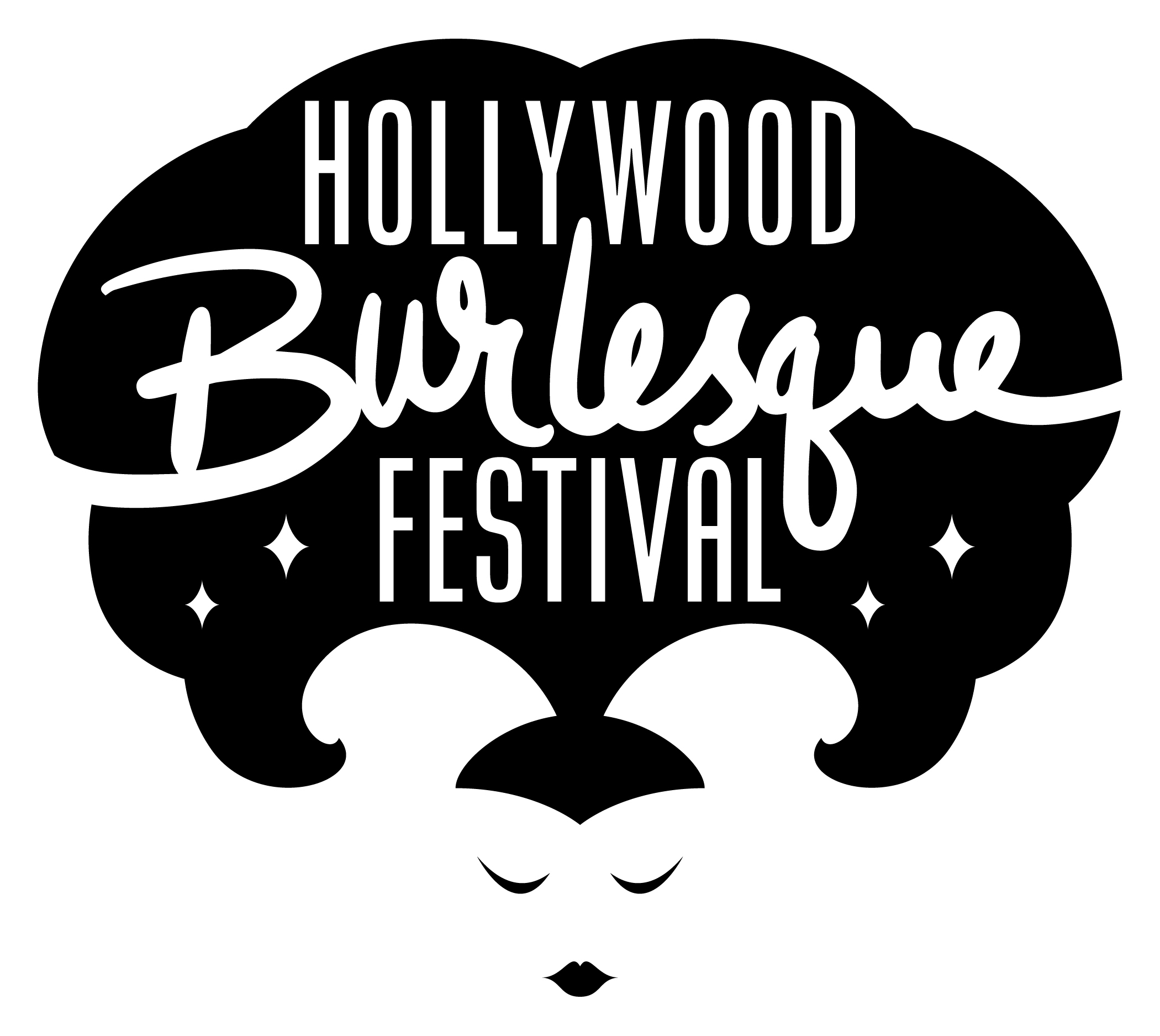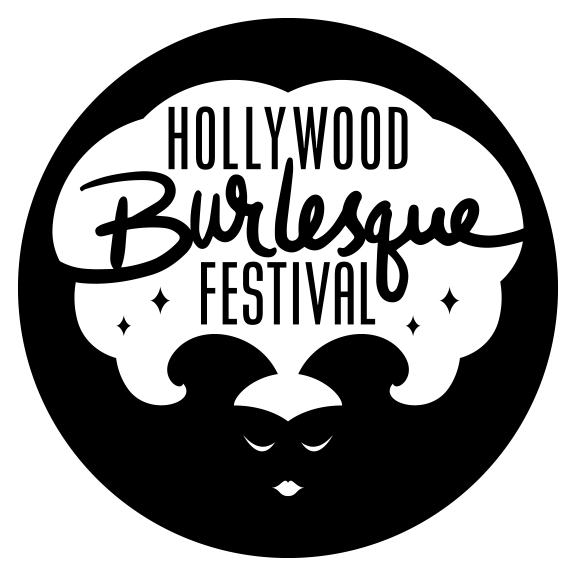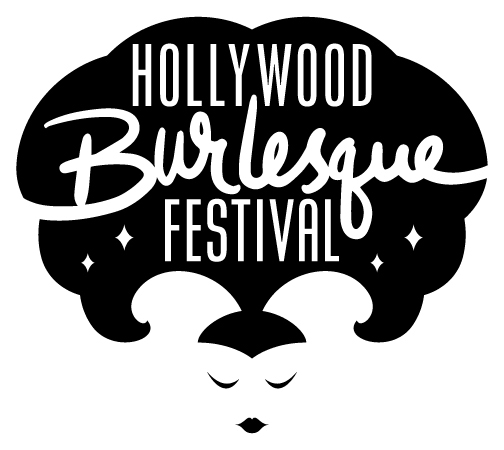
Gypsy Rose Lee, pictured here in a press photo by Fred Palumbo, knew how to market herself and her brand. She was famous for a striptease act accompanied her witty wordplay.
For the newcomer and seasoned veteran alike, the prospect of assembling a portfolio of photos for use in promoting yourself to audiences and producers can seem a little daunting. What type of photos do you need? How should you prepare for a photoshoot? How the heck do you find a photographer?
Two of L.A.’s best burlesque professional photographers are on hand to help you out.
Sam Hernandez has shot everything from the Emmys and pro sports to corporate events, commercial catalogs and the Burlesque Hall of Fame. He’s currently getting back to his roots, documenting MacArthur Park on 35mm film.
Brian C. Janes is a new media producer and published photographer. His hardcover coffee table book, It’s All That Glitters: Portraits of Burlesque Performers in Their Homes was published by Schiffer Books in April 2012 and is available through major retail outlets.
We talked to Brian and Sam about what the burlesque performer needs to know about photography. Here are a few things to keep in mind:
Artistic Photos vs. Marketing Your Brand
Some pretty pictures may not be the best way to sell yourself. “Artistic photos are more about the lighting and the photographer’s art than about the performance and performer,” said Sam.
Posing nude, draped over a gargoyle in deep shadows may make for an incredible piece of art, but it doesn’t sell you to a burlesque producer or an audience. “The performer is the brand,” said Brian. “You want people to come to see you. Not a lot of dancers think this way, and it’s sometimes reflected in the poor quality photos people use to promote themselves.”
Press Photos
The point here is promotion. Press photos are used by a producer to promote their show or festival. There are two types of photos you need in your arsenal: a headshot and a body shot. A headshot will show your shoulders and head, and a body shot will show you from your head to your feet. These are usually more “posed” than live photos, but shouldn’t be so posed you look like a Varga girl.
These are photos that sell YOU; your personality and your look. But they should be neutral enough to work for a variety of shows. Neutral but not generic.
In fact, Brian advises that performers strive to capture their “gimmick” in these types of photos: “Are you known for your balloon dancing? Your fan dancing? Your hula? Your press photos are your opportunity to sell yourself on first impression. Everyone has a feather boa, but how does your picture with your feather boa set you apart from the next performer with that same boa?”
“I tend to go more with a classic look,” said Sam. “I try to recreate the old Hollywood glamour look with the images. It’s a bit of a challenge to replicate the lighting they had. Once you get it, it’s really rewarding. The images look great. I’m a bit of a lighting geek, so I take pride in my lighting.”
“The Len Rothe books are a great reference for that classic burlesque glamour,” said Brian. The books are The Queens of Burlesque and The Bare Truth: Stars of Burlesque from the ‘40s and ‘50s. Another great resource we’ve found is the photo blog Vintage Burlesque Photos.
Submission Photos
When applying to a festival (such as the Hollywood Burlesque Festival!) or submitting yourself to a producer, you need a photo that captures the essence of the act you are submitting. Try for a live shot that captures your energy onstage.
“Anything from a full body shot to a mid-range shot,” said Sam. “You really have to go through the live photos you have. Some of the shots will reveal more of the act than others. You need to make sure you’re well lit, and well represented,” adds Sam.
“When possible, submission photos should include both studio shots as well as stage shots.” adds Brian. “But I think it’s really important to know not to use live photos for press photos. In all cases, make sure you have the photographer’s permission to submit their photos of you. Just because you are in the photo does not give you the right to use the photo.”
How to Find a Photographer
There is no shortage of photographers in the burlesque scene, and they range in skill from the greenest of amateurs to professional photographers who have seen print in large publications or have their work hanging in art galleries. Finding the right photographer for you may seem a daunting task. Thankfully, you don’t have to break new ground.
The best thing to do is ask for a referral from a dancer who already has great photos. Not only can you narrow in on a photographer who does good work, you can get the inside skinny on what its like to work with that photographer.
Brian and Sam both take a dim view towards finding a photographer online. Said Brian, “Be cautious with any ‘modeling’ sites online. They are full of shady characters who are just looking to get a naked girl in front of their camera.”
Sam agrees, saying, “The burlesque crowd is mostly word-of-mouth. And if you can’t find a referral, track down whoever takes live photos at the shows.”
“It comes down to doing your research,” said Brian. “And remember, free is too good to be true. Cheap is often too good to be true.”
Finally, and most importantly, make sure you are comfortable working with the photographer you find. A photographer who puts you at ease, who creates a safe, welcoming environment for you is worth something.
Sam told us, “It’s really important that you trust the photographer and have a good working relationship, because the photos will show it.”
It’s just business. If you don’t know if you can afford to work with a certain photographer, ask!
“I’ve had a number of people approach me and say ‘I’d love to shoot with you, but I can’t afford you.’” relates Brian. “First, when have you ever asked me how much I charge and second, when have you ever come up to me and said, ‘Here’s my budget, can you work with me?’ It can be a negotiation.”
Sam concurs. “When I’m working with people for the first time, especially people I don’t know, I always quote the rate for the shots and let them know what I‘m providing: a cd of the photos, retouch or no retouch, how many photos, etc.”
The Photo Shoot
“You should definitely meet with the photographer once or twice to go over wardrobe or ideas,” said Sam. “Or maybe email back and forth and meet face to face at least once beforehand, especially if you haven’t worked with them before.”
Take the time to really prepare for a photo shoot. If you can book a professional make-up and hair person to work with you, do it. You’ll be much happier with the outcome. At the very least, schedule yourself enough time to get your face on.
If you have bruises, touch them up. “Touching up bruises and blemishes will save Photoshopping time on the photographer’s end,” said Sam. “You may not fully cover it up, but it will make it easier to touch up. A few seconds can save five to ten minutes later.”
“Don’t have a BDSM session the night or even a week before a shoot,” Brian agrees. “And shave, shave, shave!”
Make sure your costume pieces are wrinkle-free and in good repair. Check the individual pieces over well in advance of the photo shoot for any loose threads, missing rhinestones, broken beads, etc.
If you are stripping down to the skimpiest of garments, you may consider wearing loose undergarments or going “commando” that day, so as to avoid the marks and creases underwear and bra elastic can leave. Sam has another approach to this problem: “We often work in reverse. Starting with pasties and high heels. The final shot will be you in your full costume. That way you won’t have lines across your stomach or chest.”
Make sure you look your best! Get a good night’s rest, and be sure to stay hydrated. Says Brian, “Don’t stay up late the night before and don’t go out drinking with your friends!”
FINAL THOUGHTS
When you get the proofs back from the photographer, get another person’s opinion on them. “Pass the proofs around to some friends and say, ‘What do you think of these, yay or nay?’” Brian says. “And hopefully they’ll be honest, not just pat you and the back and say, “These look great!’”
Always credit the photographer. Many professionals will watermark their photos, making this much easier for you, but it is your responsibility to make sure that watermark doesn’t get removed or obscured.
Make sure you understand exactly how you may use the photos. If you don’t know, ask the photographer. Brian has advice for the performer who wants carte blanche to use photos of herself. “If you the performer want to be able to use the photos to your heart’s content without having an angry photographer tell you to pull them down, be prepared to compensate the photographer. You must come to a business agreement, and a business agreement usually include some kind of cash transaction.”
You want your promotional photos to look as good as possible, representing you at 110% on your best day. A good promotional photo can help you get bookings, and can win over audiences before they even see you perform. Take your time and prepare. Keep in mind that you are freezing a moment in time. Make it a moment to remember.
About The Author:
Mr. Snapper is a Los Angeles-based bro-lesque performer and one half of the comedy variety duo Mr. Snapper & Mr. Buddy. You may read his thoughts on live entertainment in general at Mad Theatrics, where he blogs under his given name.



